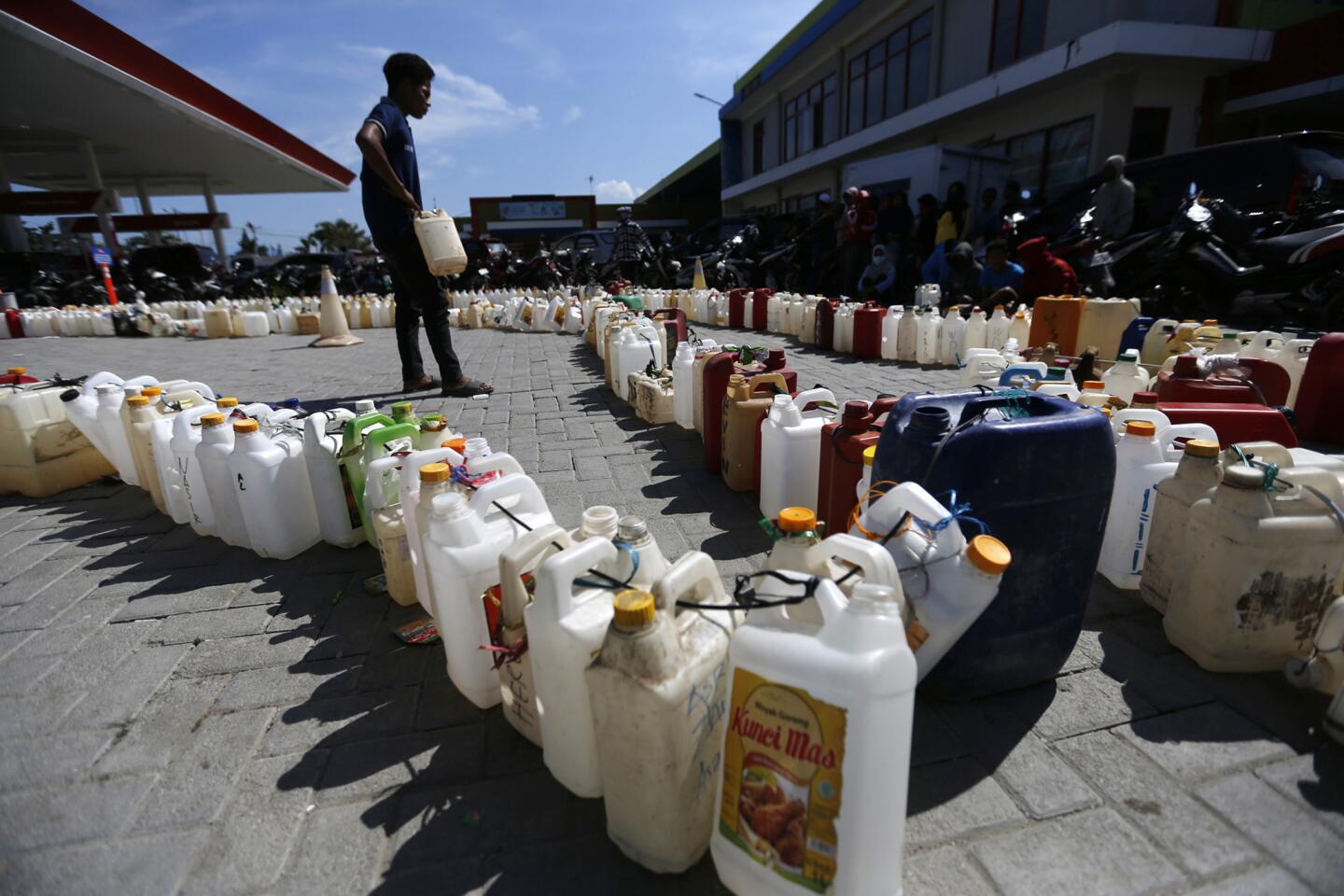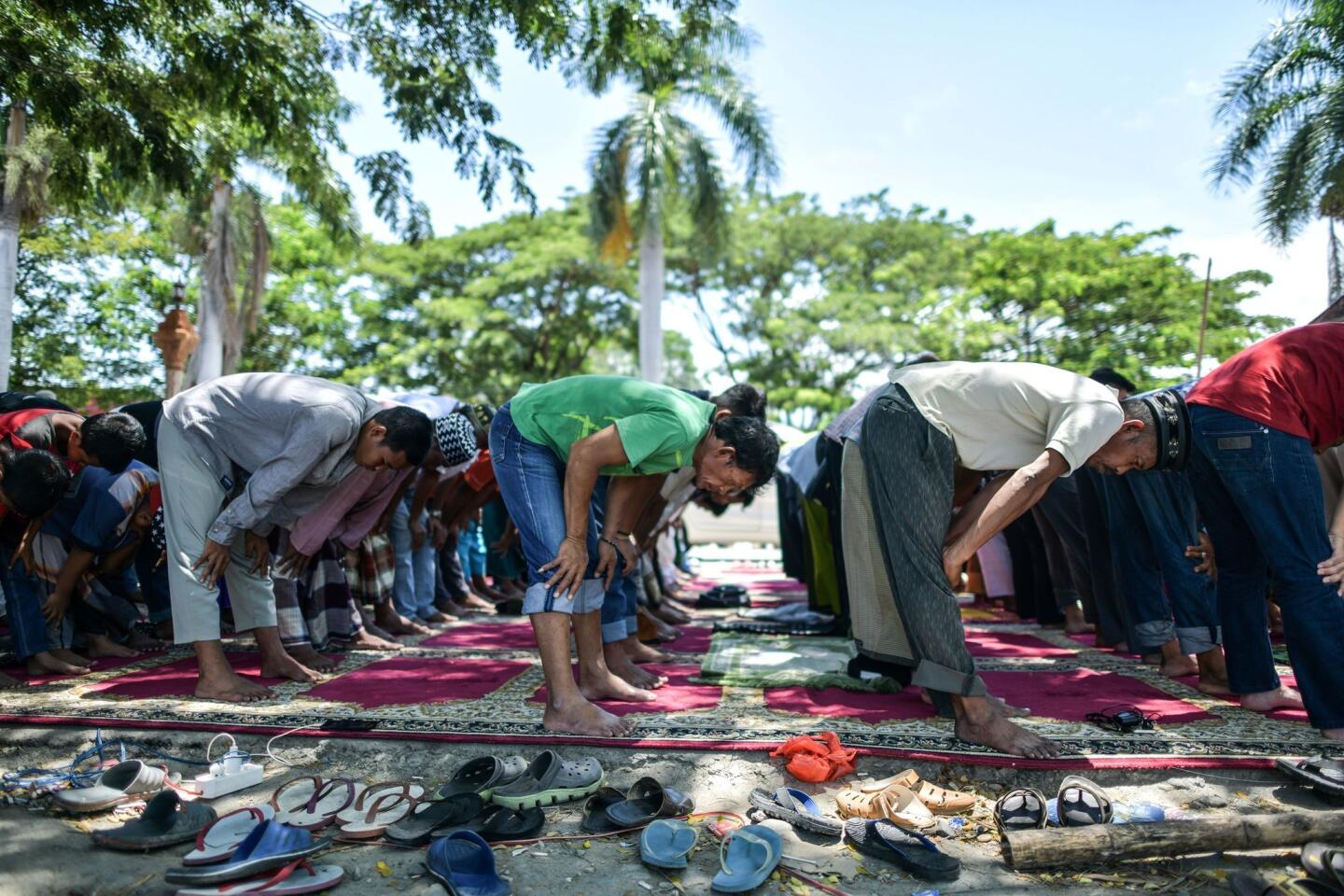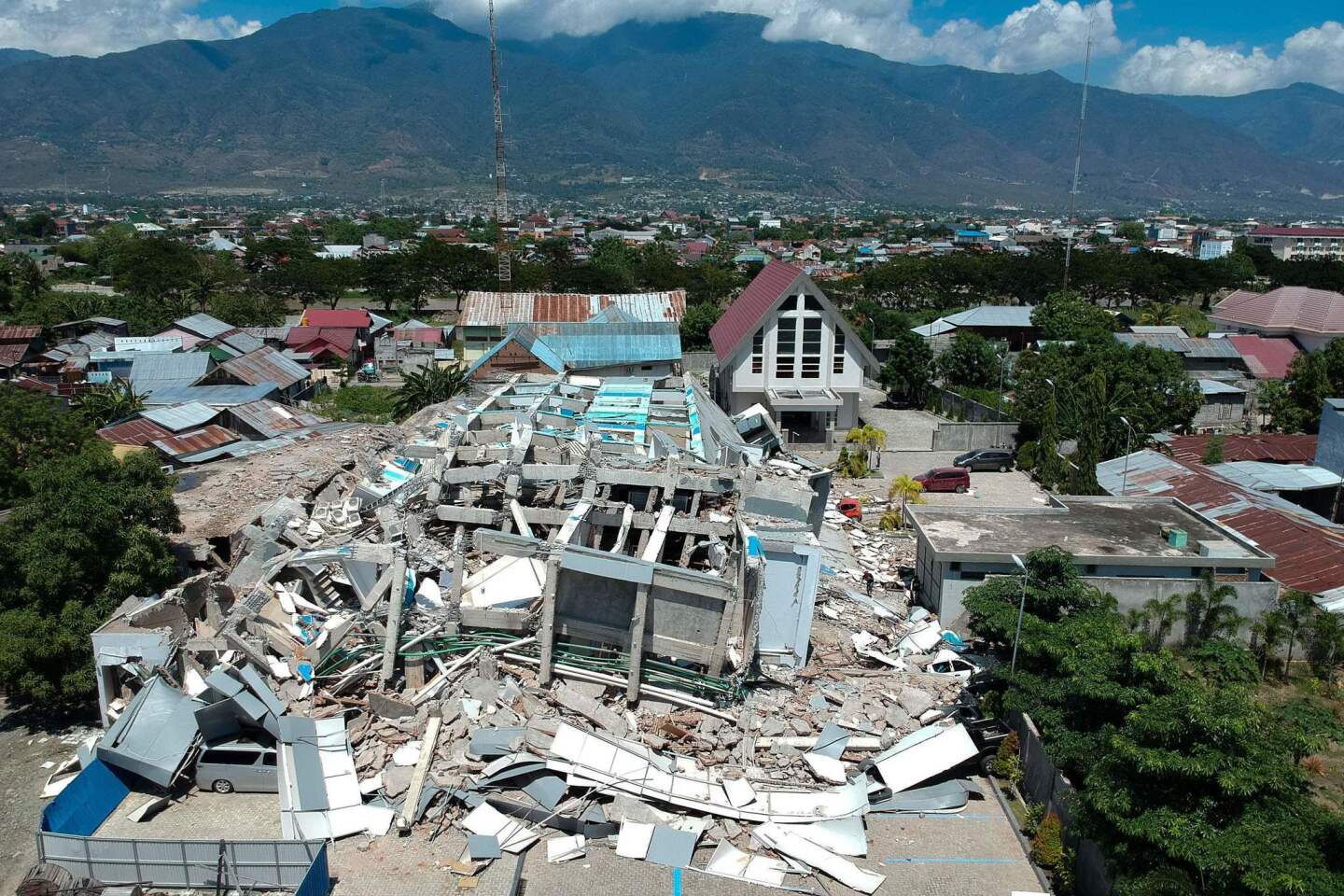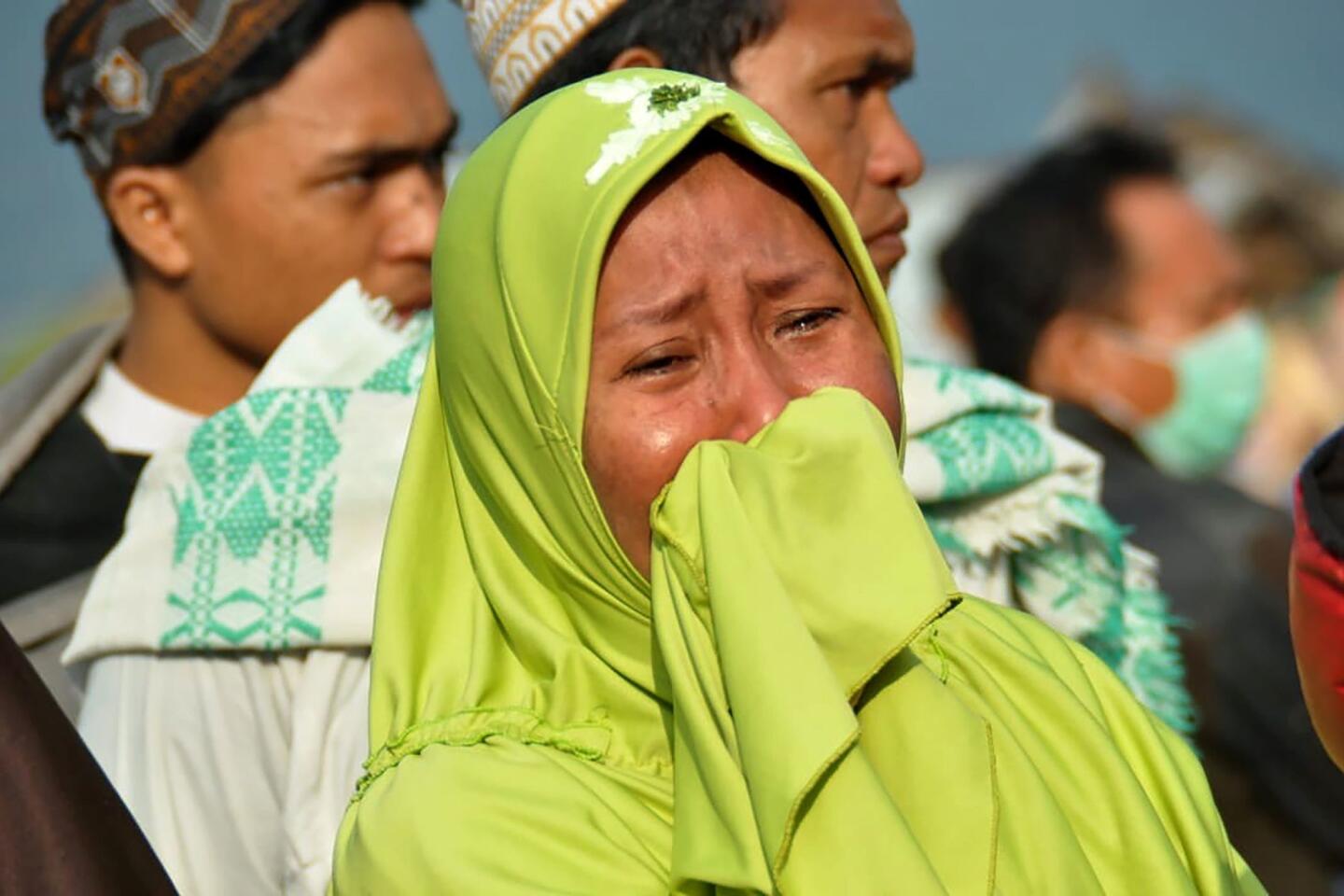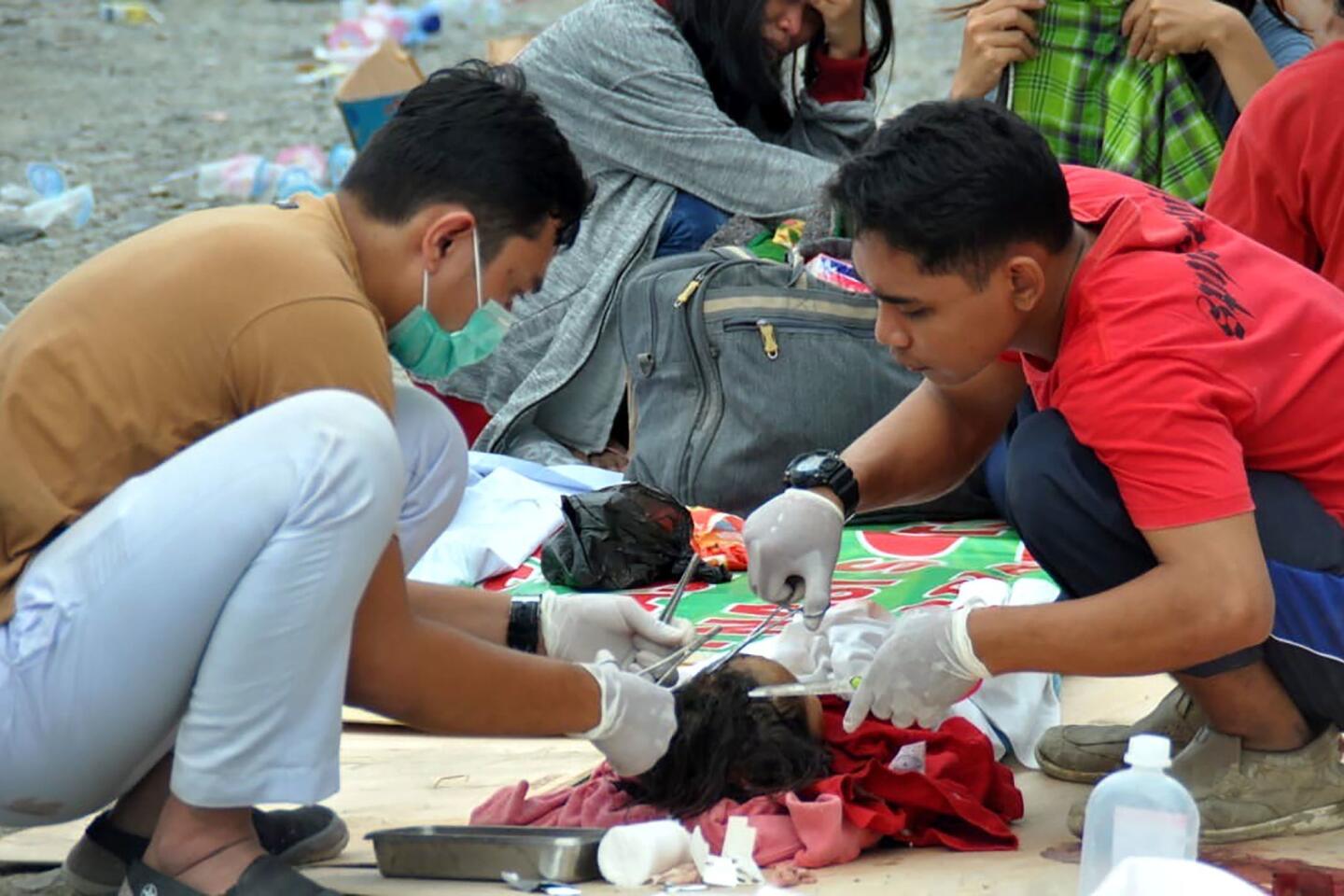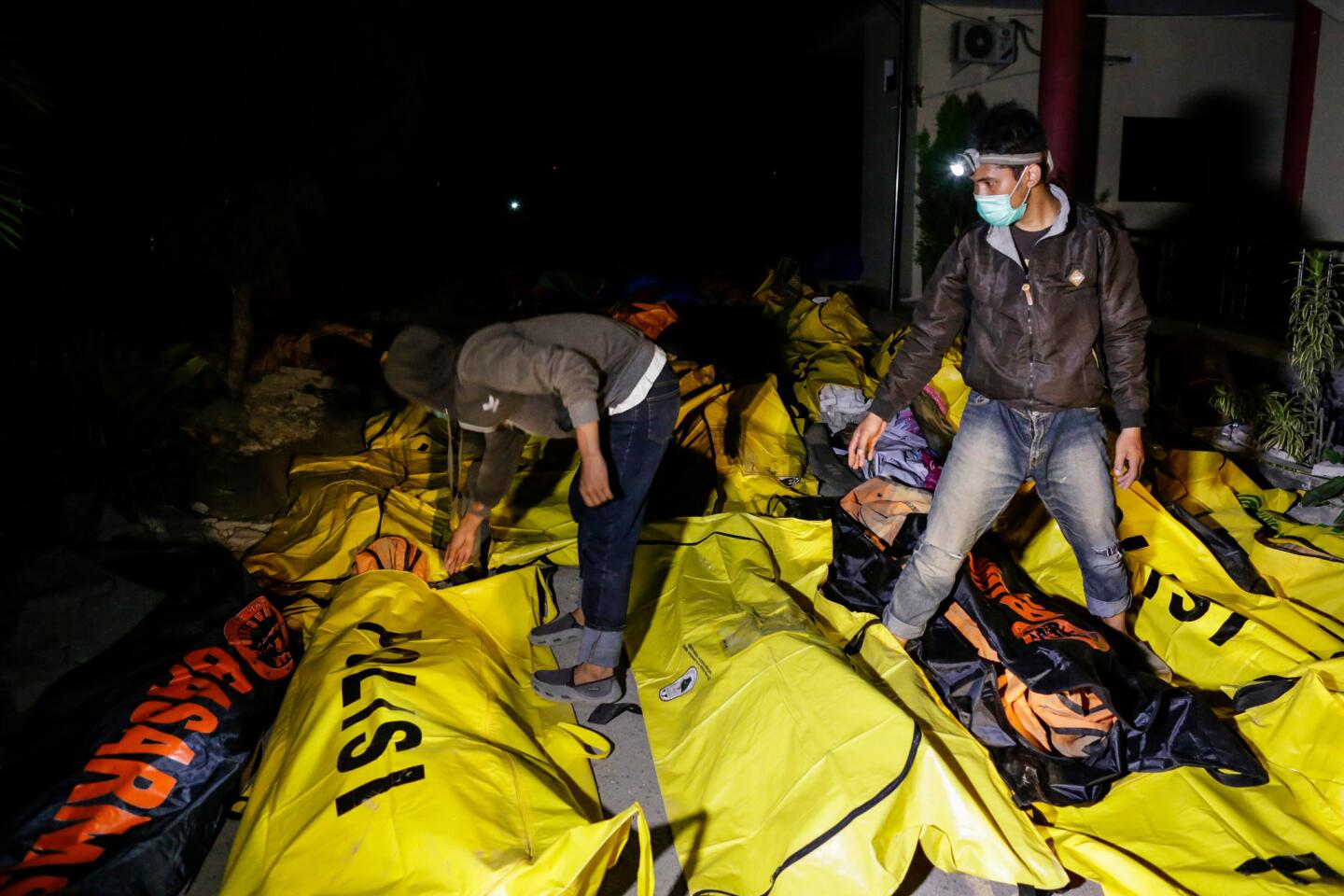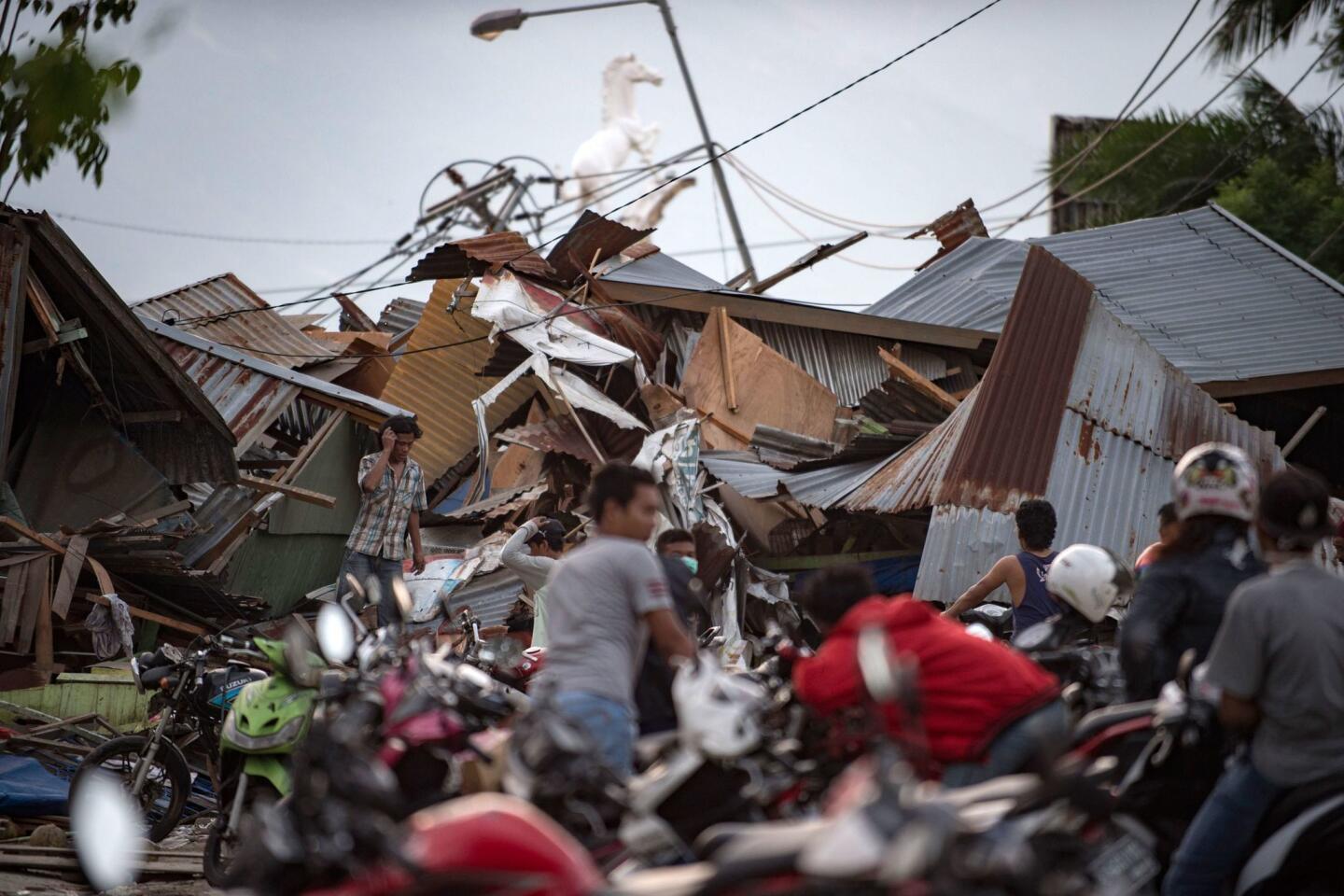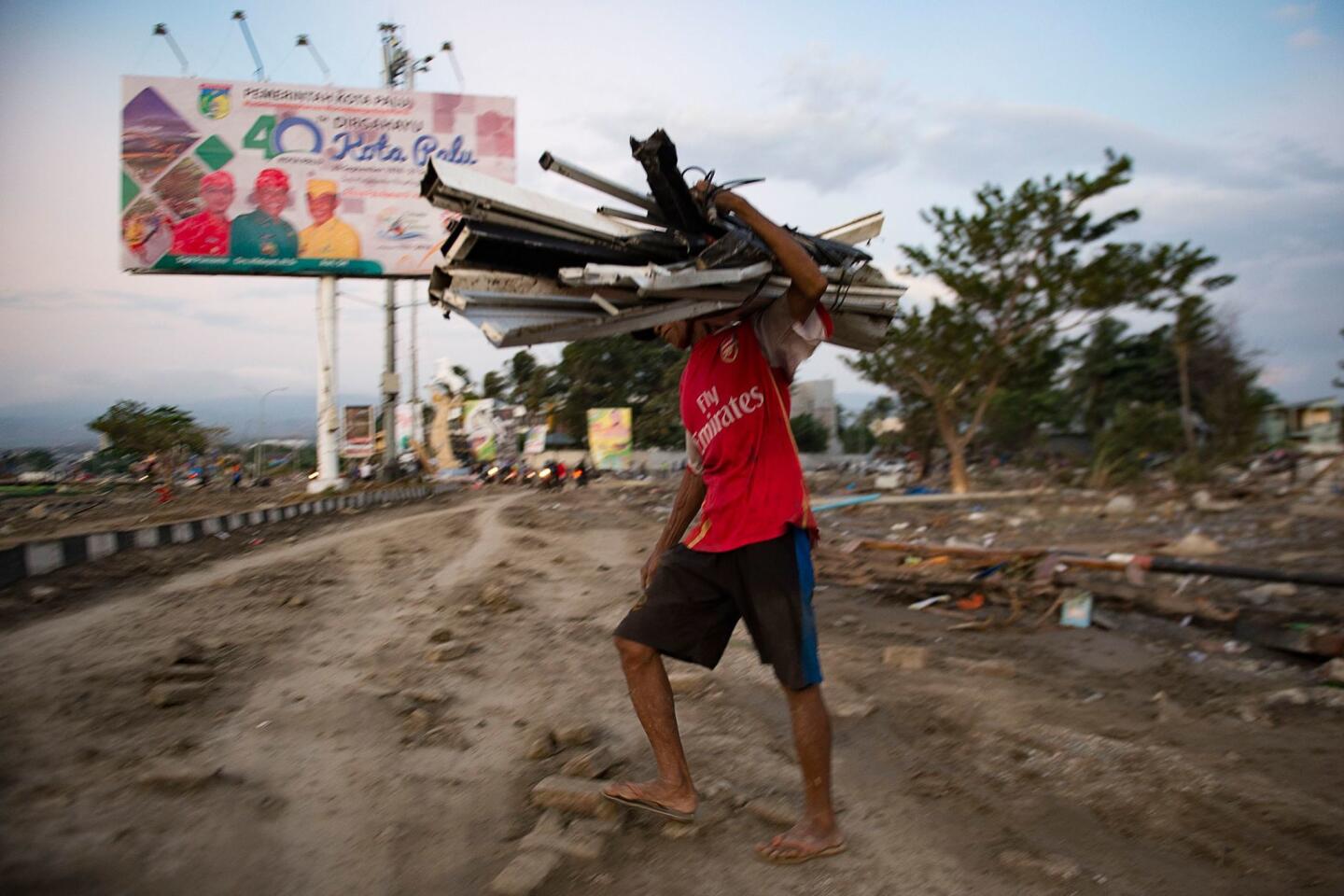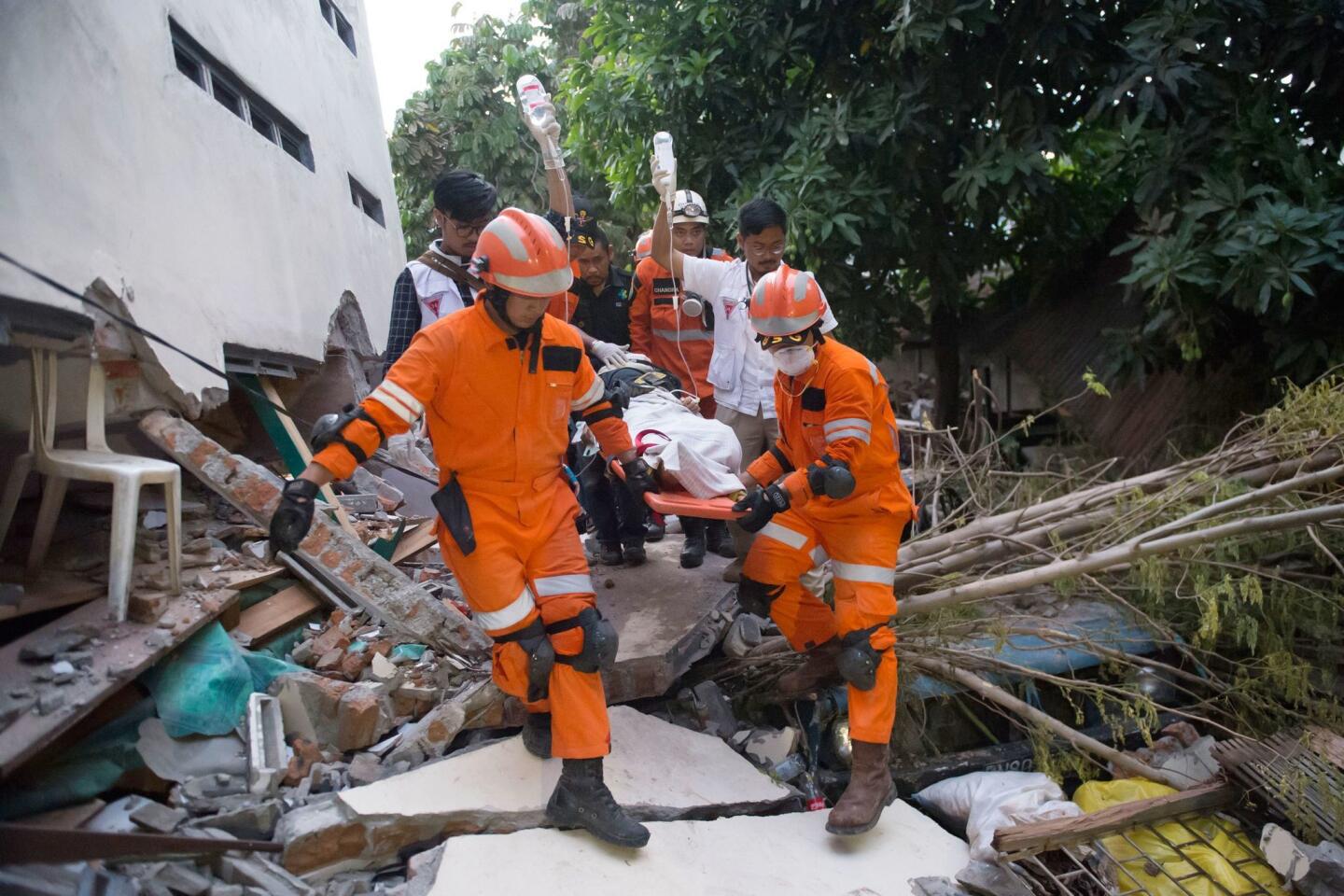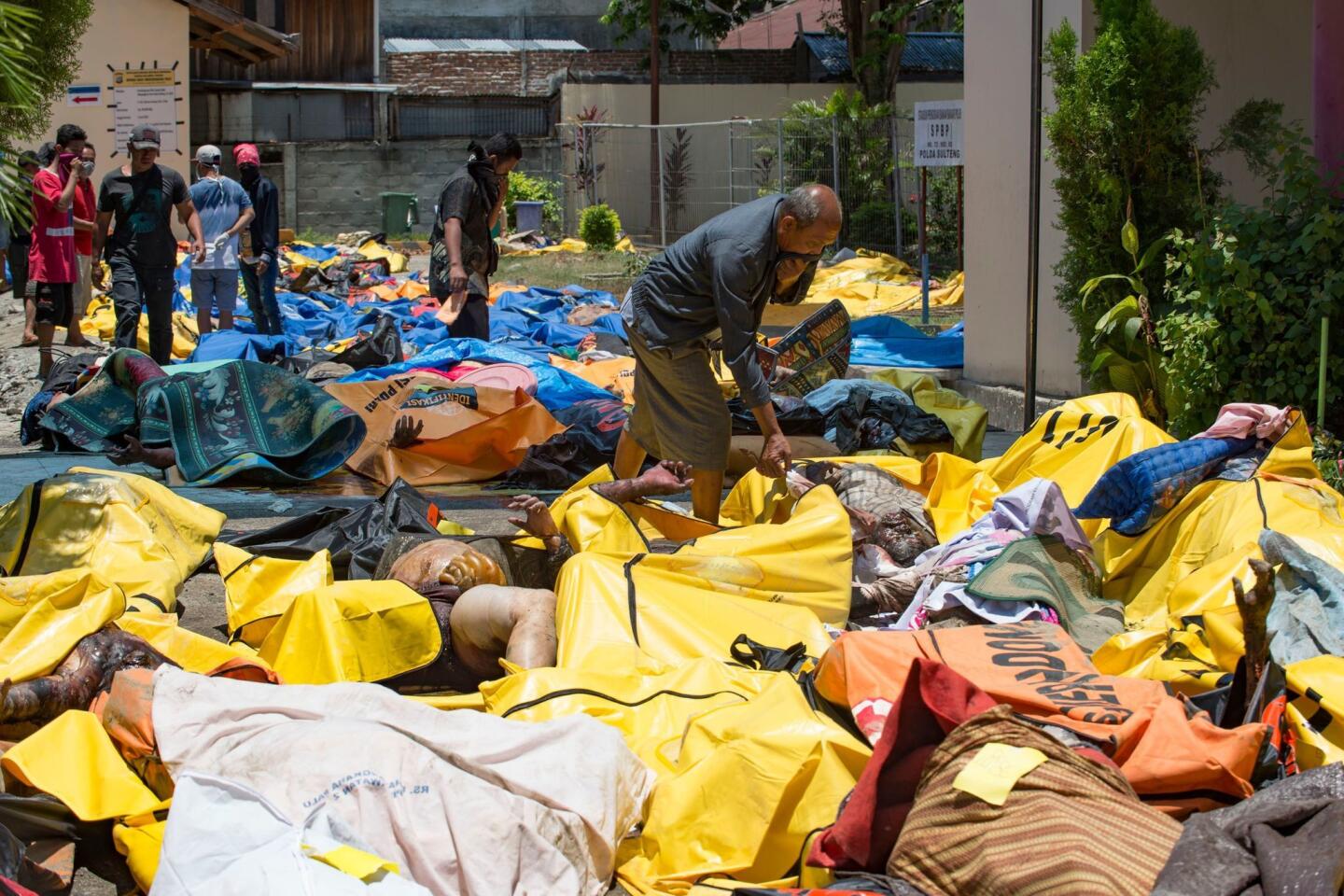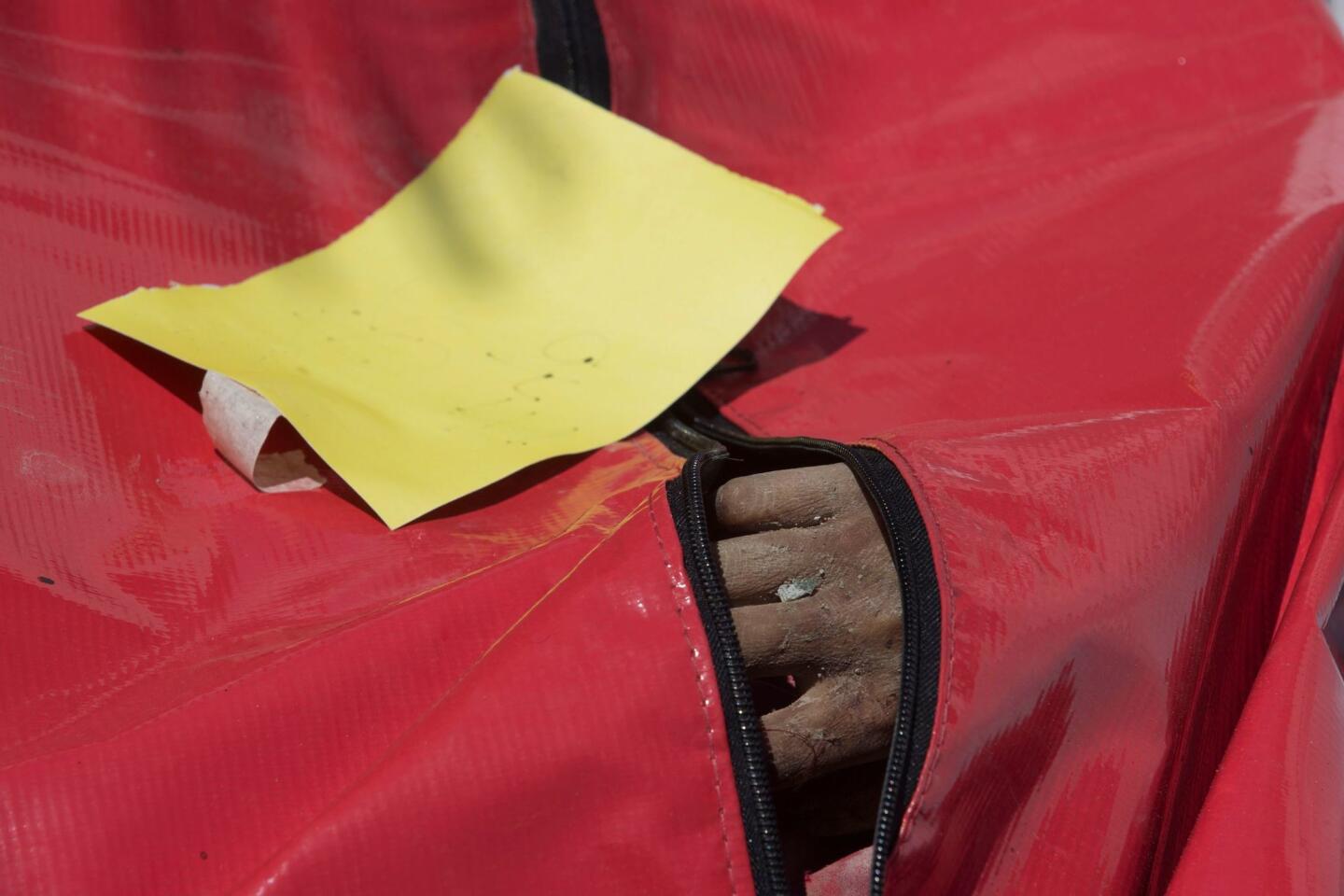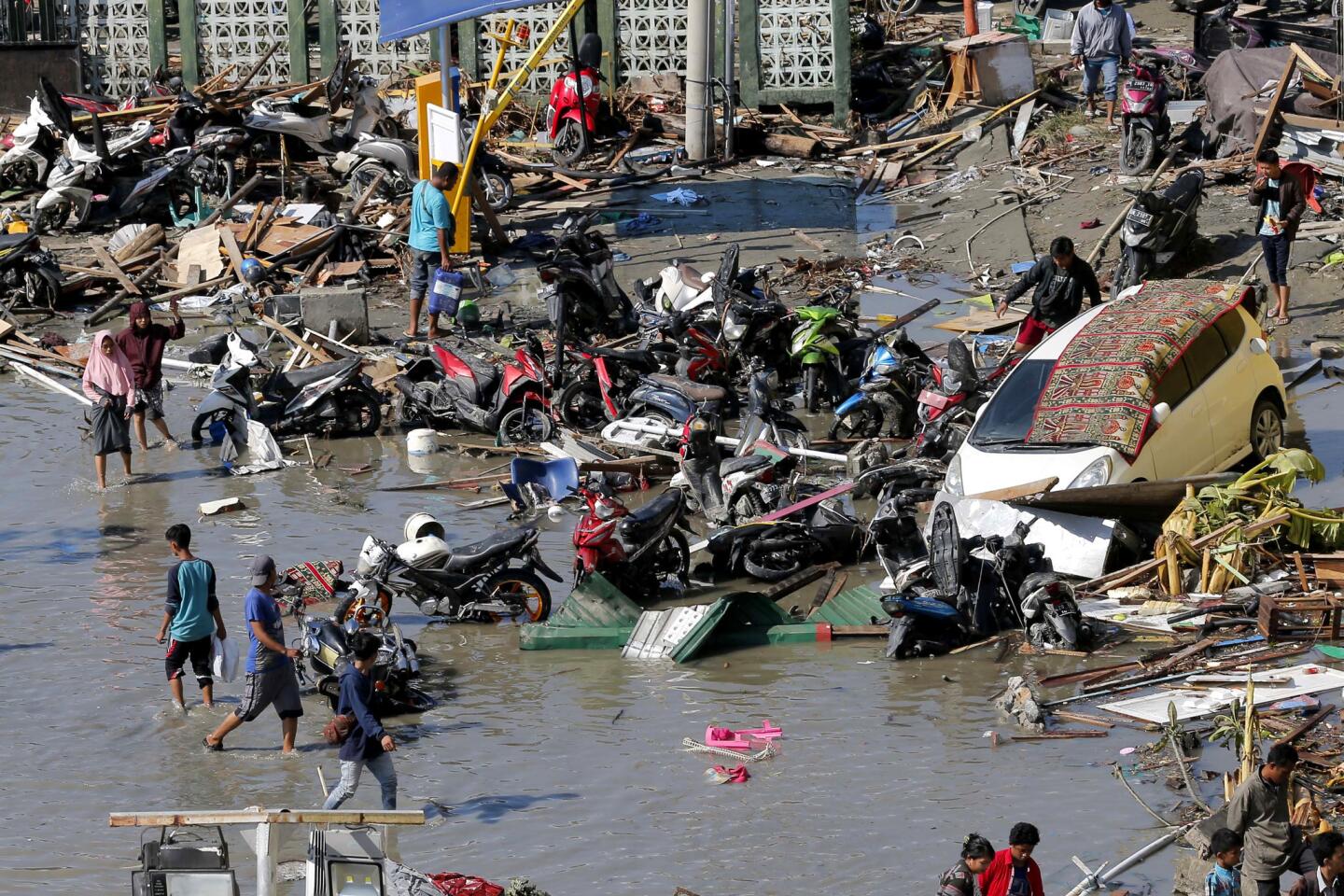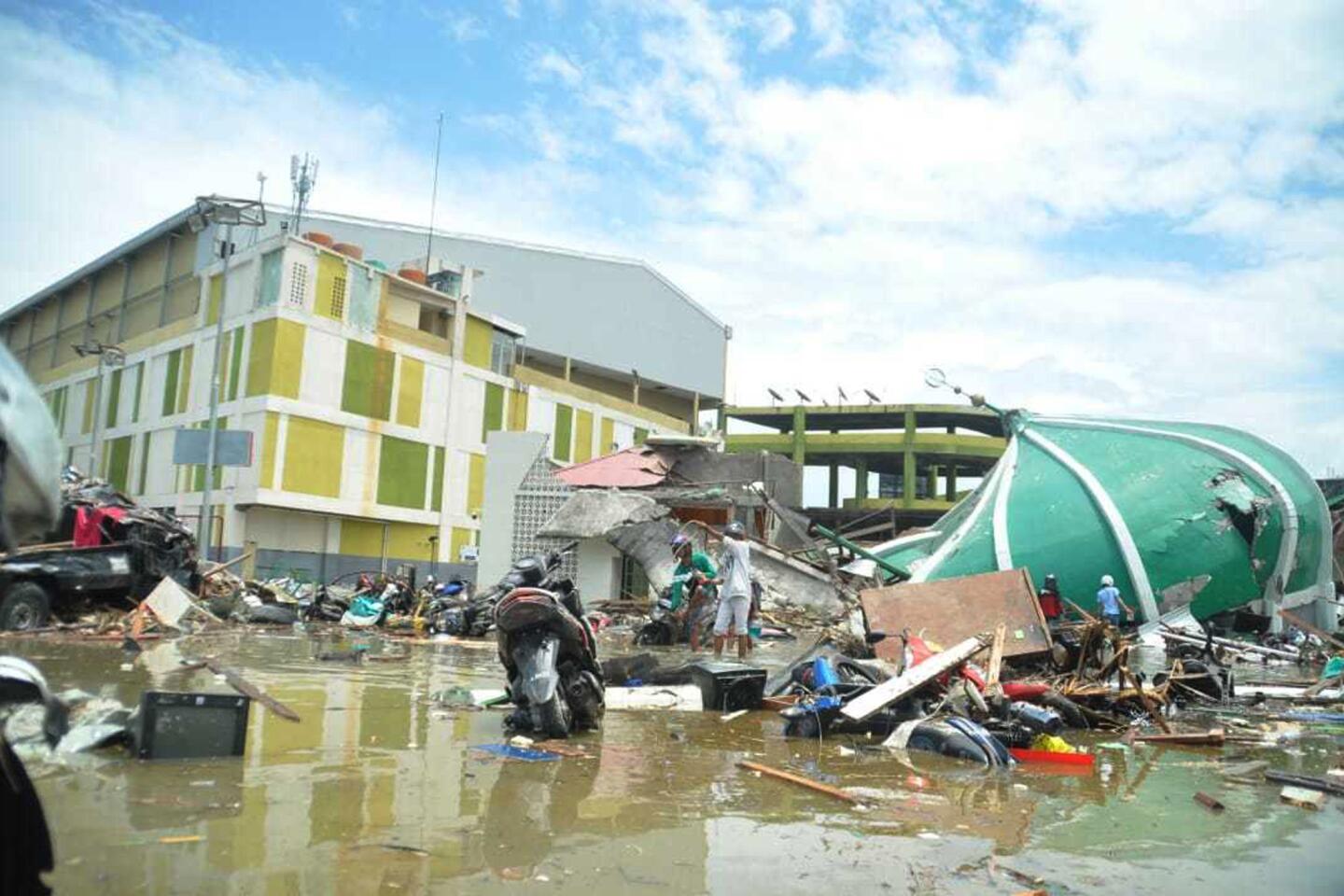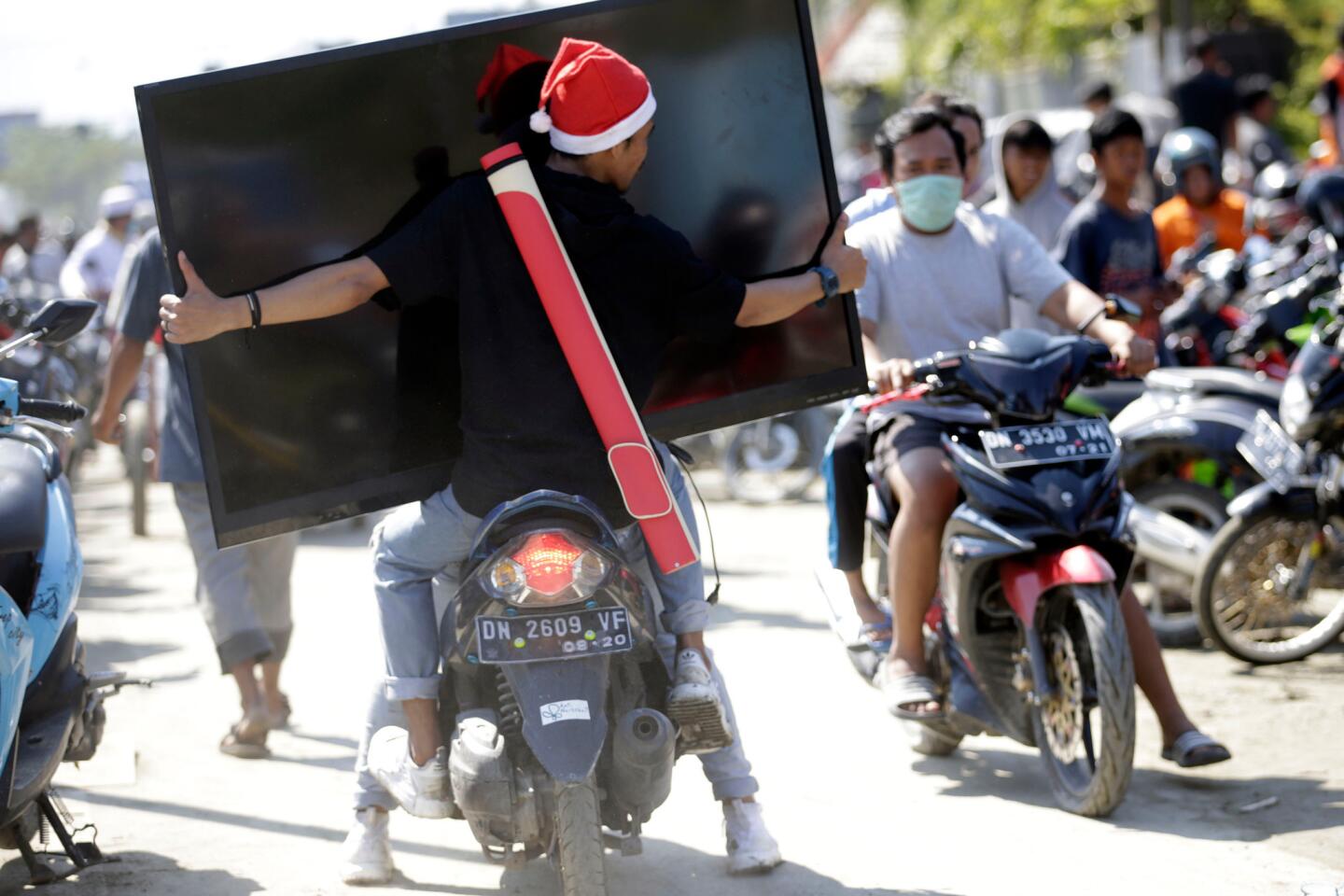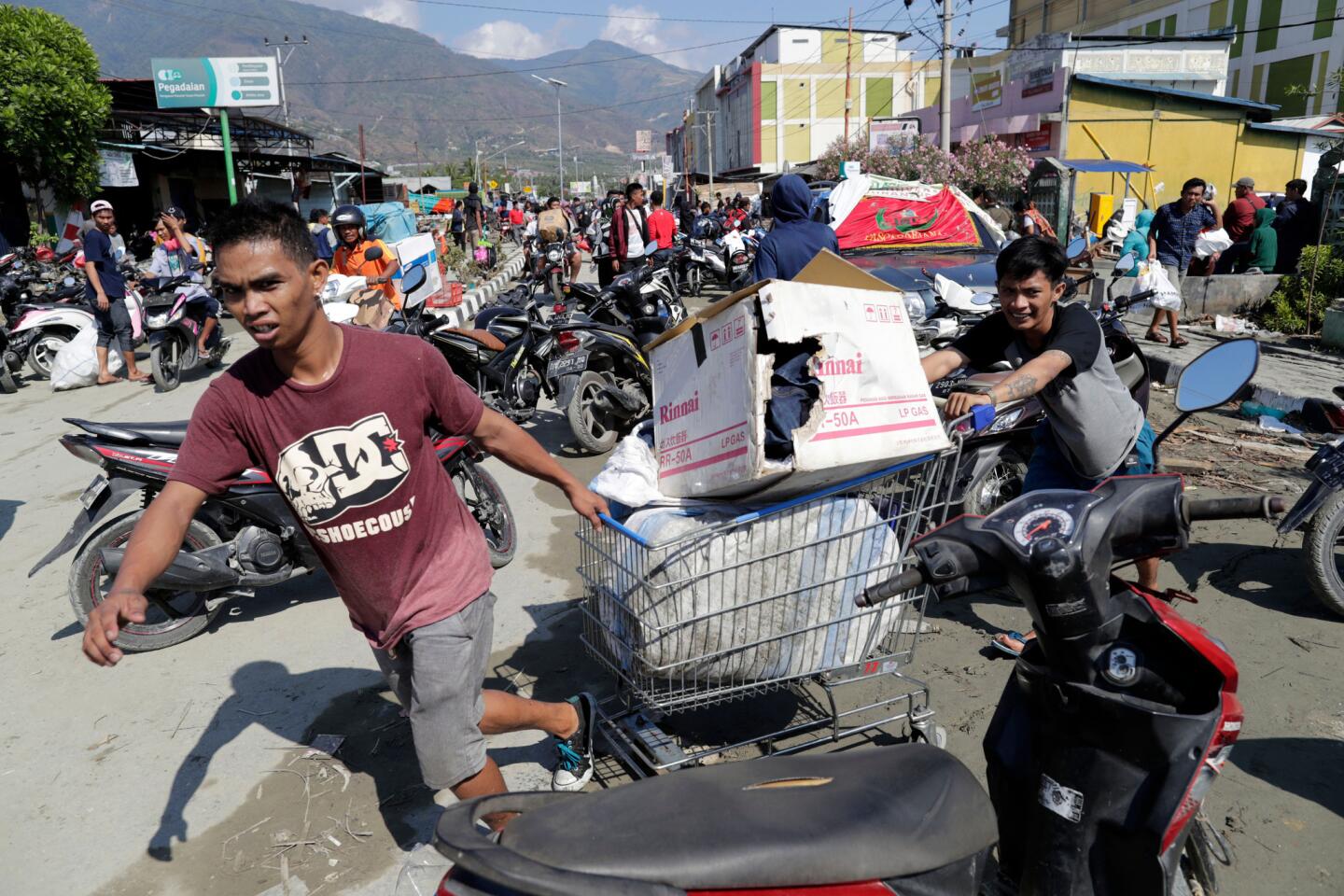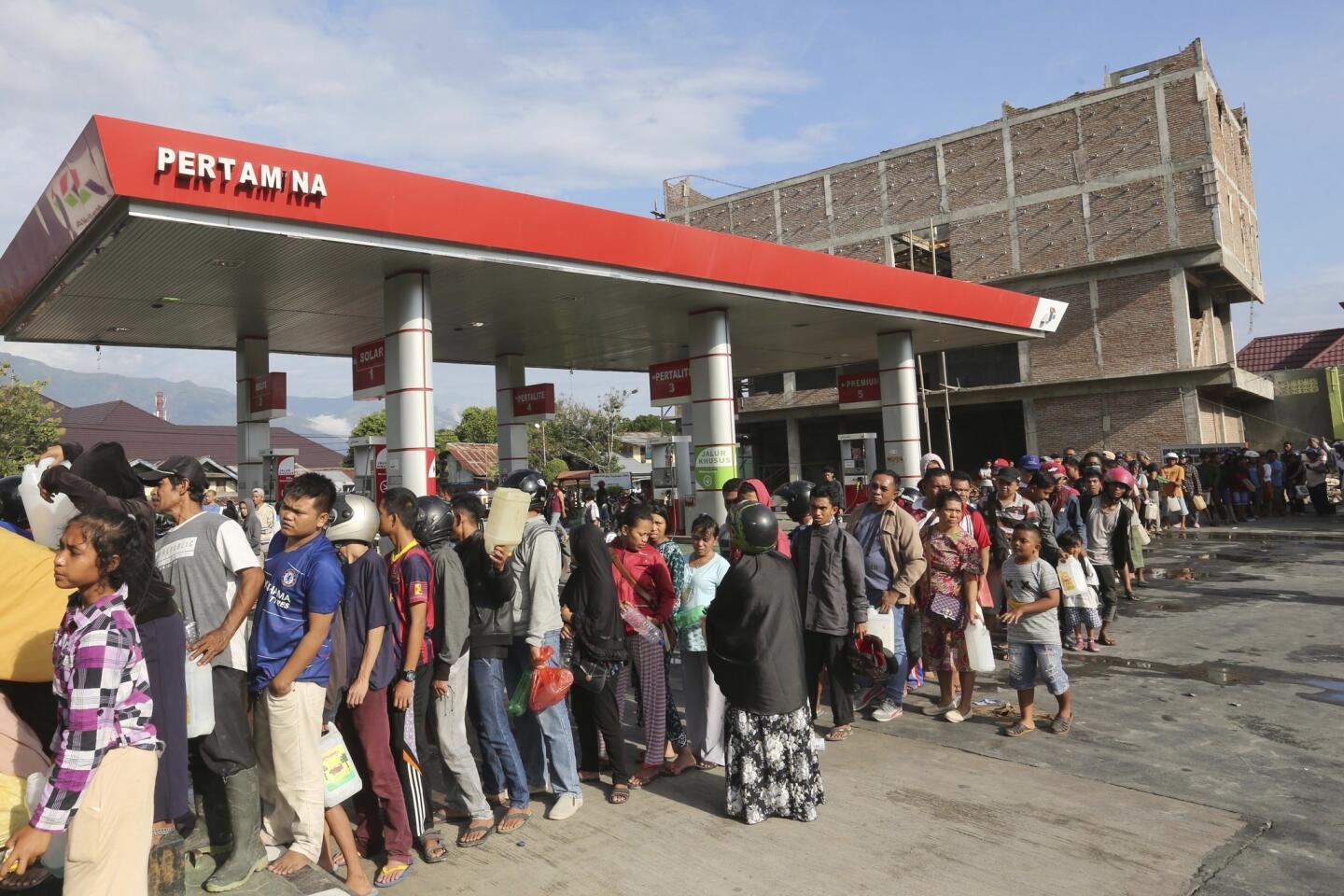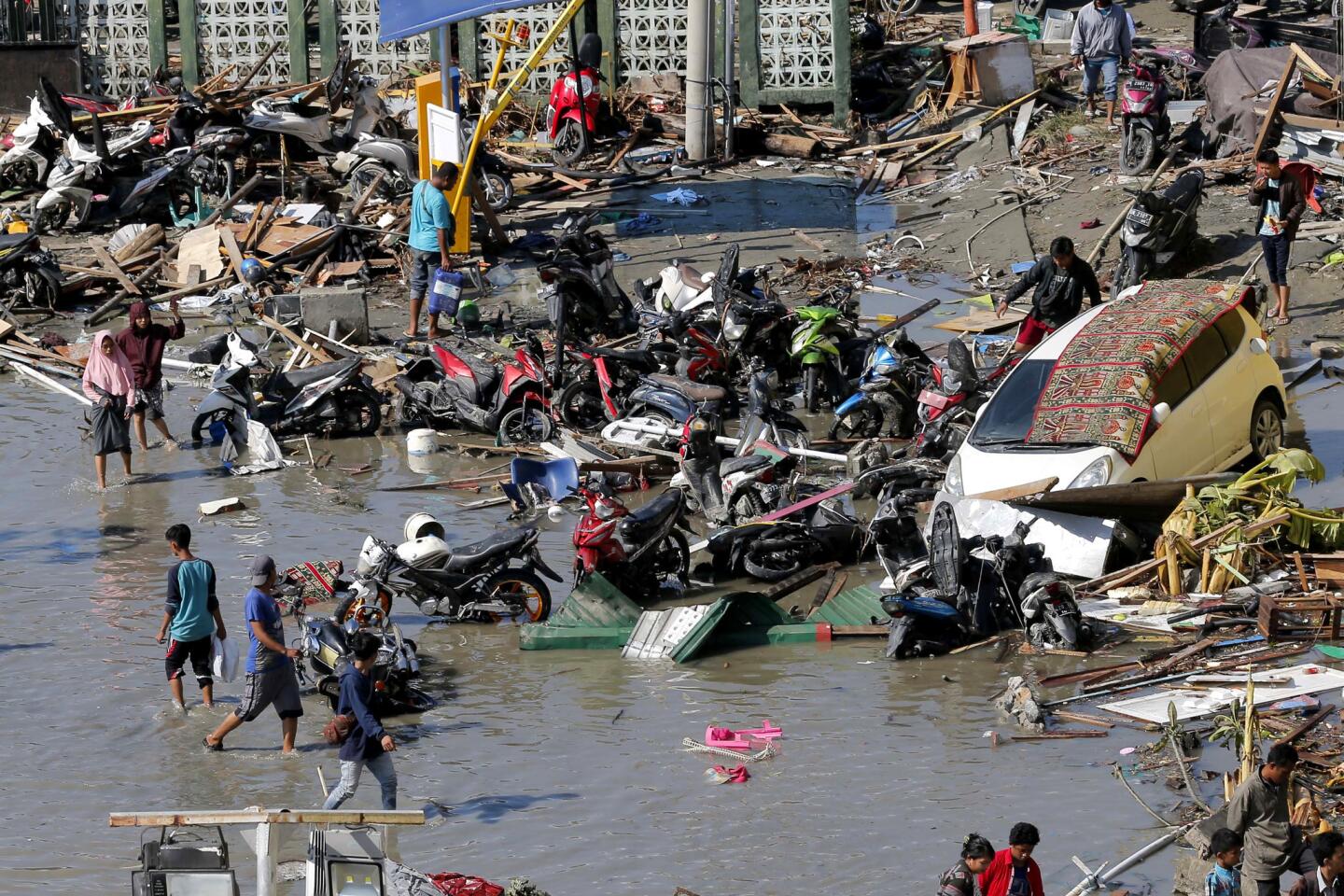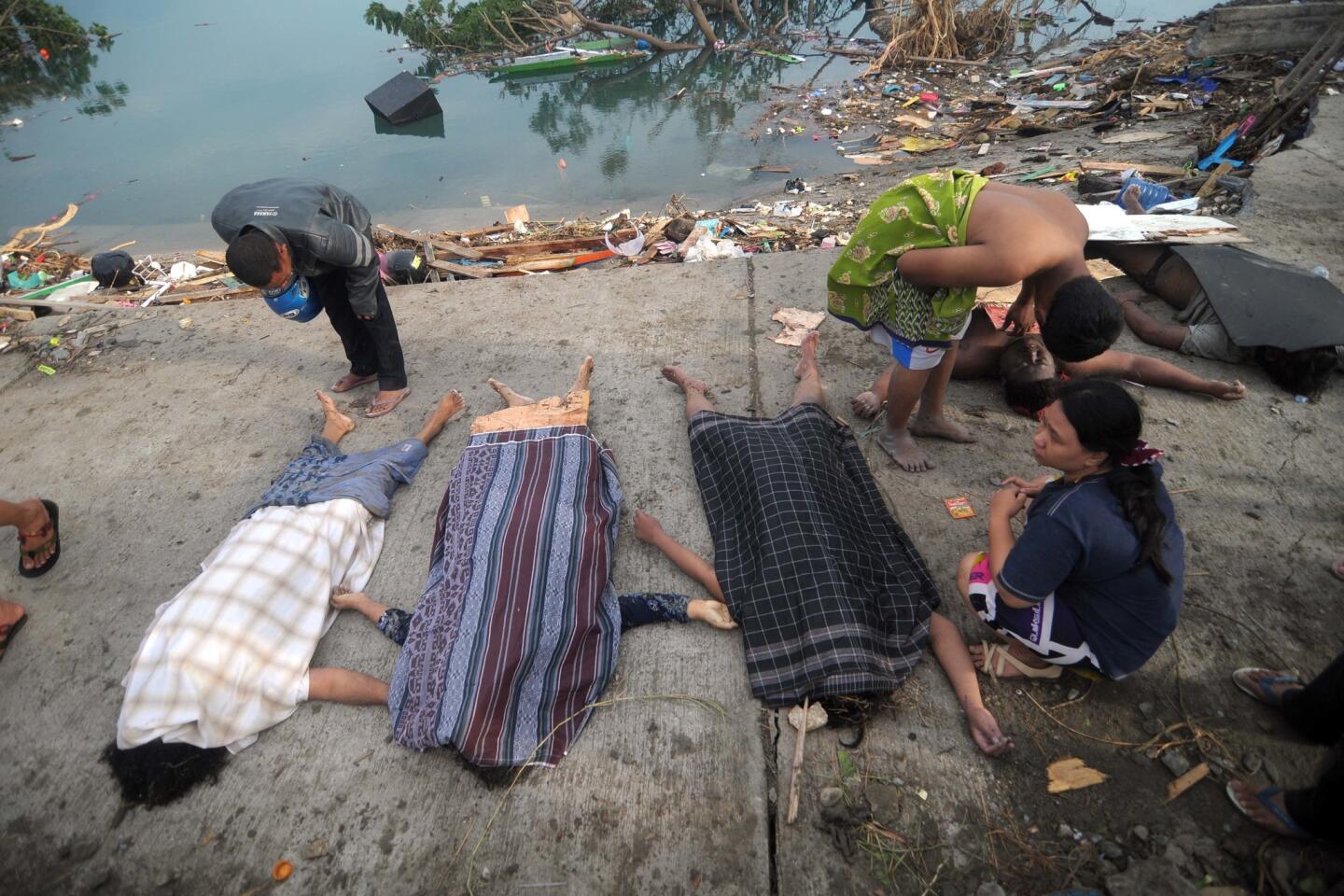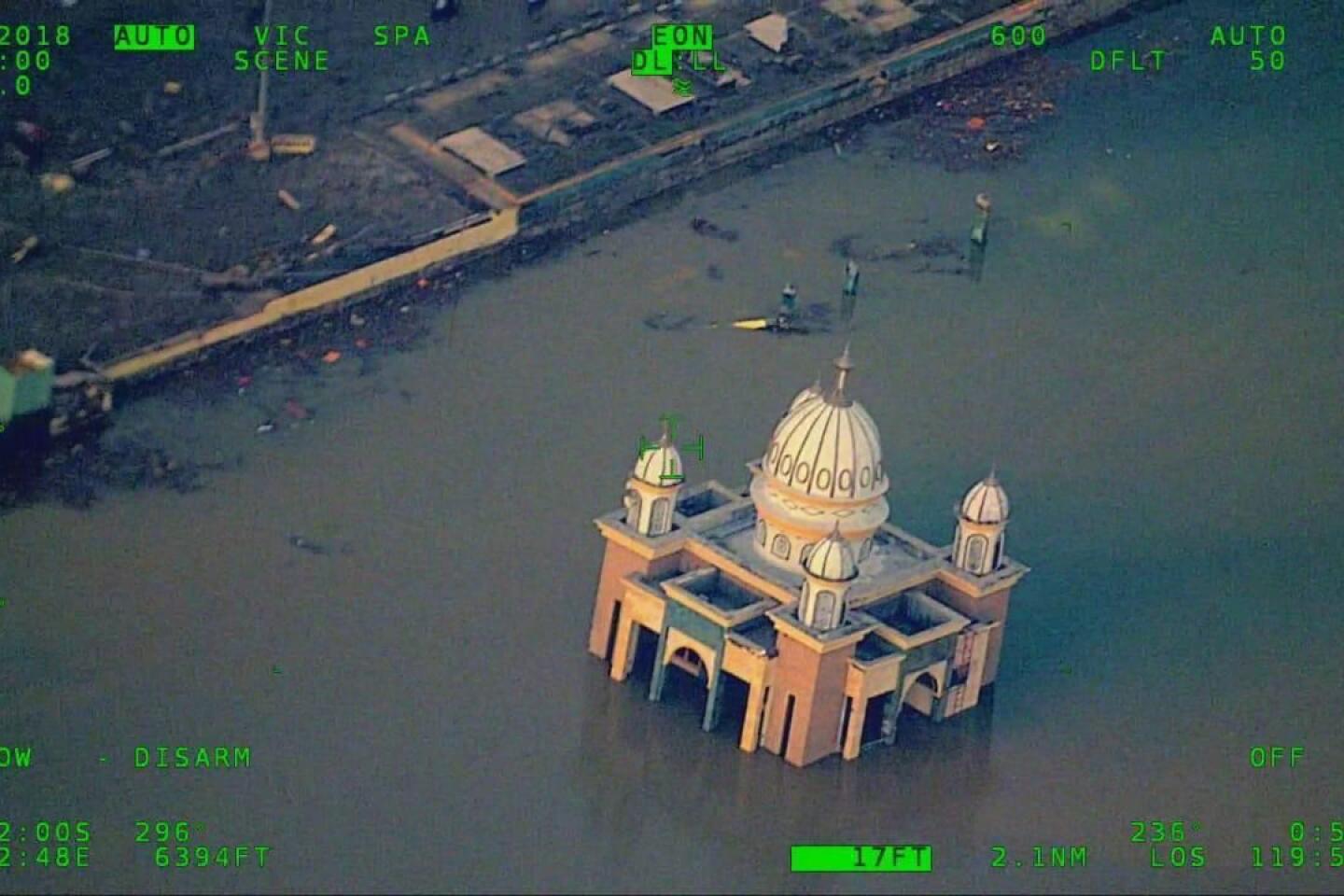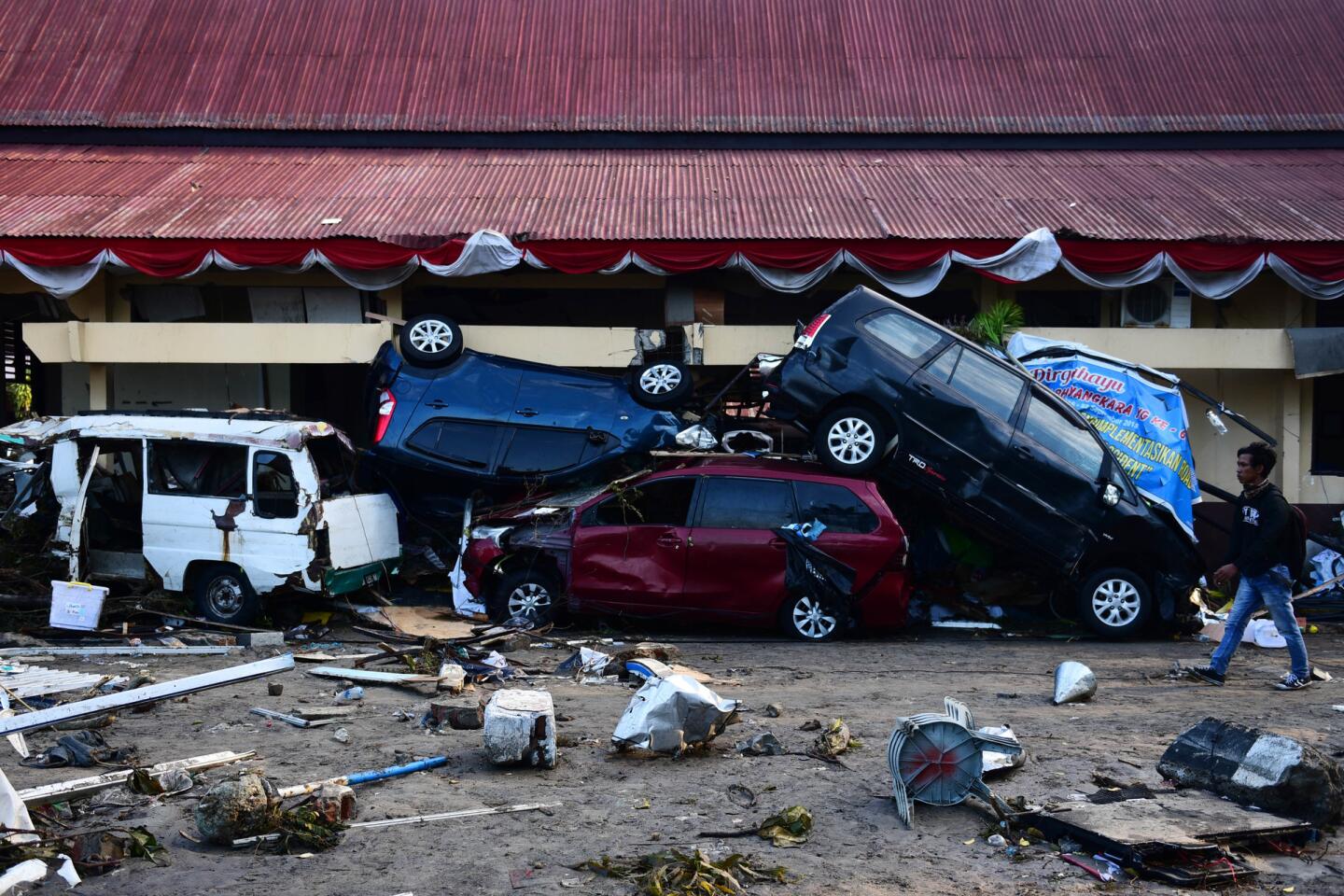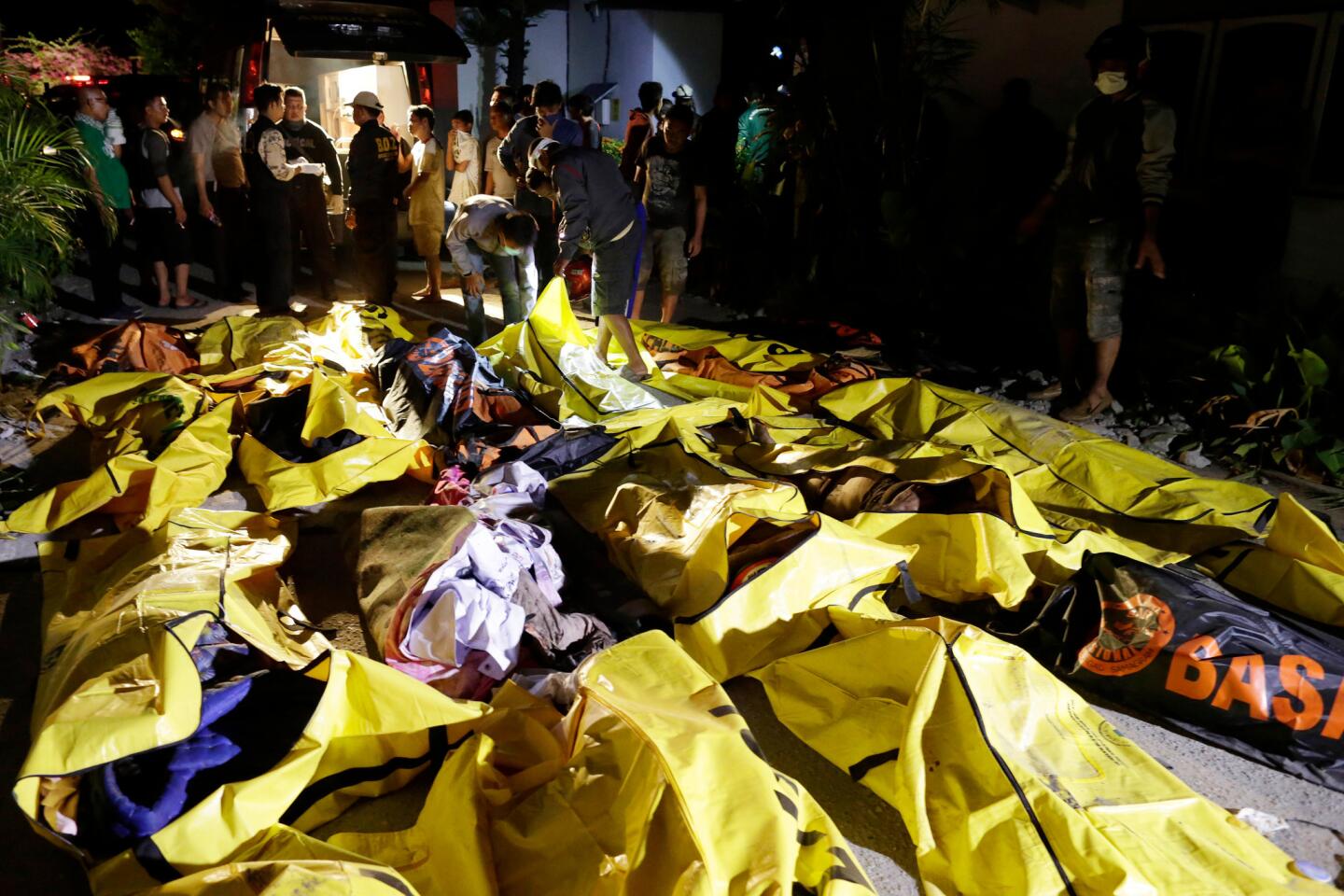Air traffic controller who helped plane take off safely is among at least 405 dead in Indonesian earthquake and tsunami
- Share via
Reporting from Jakarta, Indonesia — Moments after 21-year-old air traffic controller Anthonius Gunawan Agung cleared a Batik Air flight for takeoff from Palu on the Indonesian island of Sulawesi, a magnitude 7.5 earthquake struck.
Agung remained on the fourth floor of the control tower until the plane took off safely Friday evening. As the roof above him collapsed, Agung jumped from the damaged tower, suffering a broken leg and internal injuries.
With the airport largely disabled, hours passed before a helicopter could arrive to airlift him to a major hospital. Agung died early Saturday, officials said, as the death toll from the quake and an ensuing tsunami rose to 405, with many more still unaccounted for.
“Agung dedicated himself to his job until the end of his life and did not leave the control tower until the plane took off, even though the earthquake had struck,” Didiet K.S. Radityo, corporate secretary of the Indonesian Flight Navigation Service Institution, or AirNav, told the Jakarta Post on Saturday.
“He passed away 20 minutes before the helicopter arrived,” Didiet said of Agung, who worked at Mutiara Sis Al Jufri Airport in Palu, the regional capital of central Sulawesi.
Indonesian officials said the quake triggered a sundown tsunami measuring between five and 10 feet high that washed over Palu and Donggala, two coastal cities in Sulawesi in the east of the Indonesian archipelago, and destroyed thousands of buildings.
The death toll did not include figures from Donggala regency, a region with some 300,000 people outside Palu that remained cut off from communications, officials said.
Sutopo Nugroho, the disaster mitigation agency spokesman, told reporters in the capital, Jakarta, that the deaths had been tallied from four hospitals in Palu, a city of about 380,000. Sutopo said there were likely to be “many [more] victims,” possibly including some of the hundreds of people who were attending a beach festival when the tsunami struck.
Images from the stricken area — some relayed by the disaster mitigation agency and others posted on social media — showed a giant wave slamming into the coast along Palu after the quake occurred Friday around 6 p.m.
The video showed terrified onlookers observing the approaching water from the upper reaches of a coastal building, then turning to flee in terror as the water rolled up the shoreline and surged to an apparent 10 feet high, nearly swamping the vantage point.
Waves in some places were described as reaching almost 20 feet high.
Ensuing video showed a damaged mosque — a familiar local landmark — as well as campaign posters for national elections scheduled for April. Other images posted overnight showed lines of dead bodies, debris, damaged buildings and sodden streets.
Aulia Ariani, the head of communications at the Indonesian Red Cross, said colleagues on the ground described scenes of chaos, including “lots of collapse[d] buildings, [damaged] homes and streets, dead bodies.”
Comprehensive numbers of dead and injured were proving difficult to establish as relief workers raced to access the stricken region despite mangled communications and transport infrastructure and damaged power stations, she said.
“I’m afraid there are still people under the collapsed buildings,” she said.
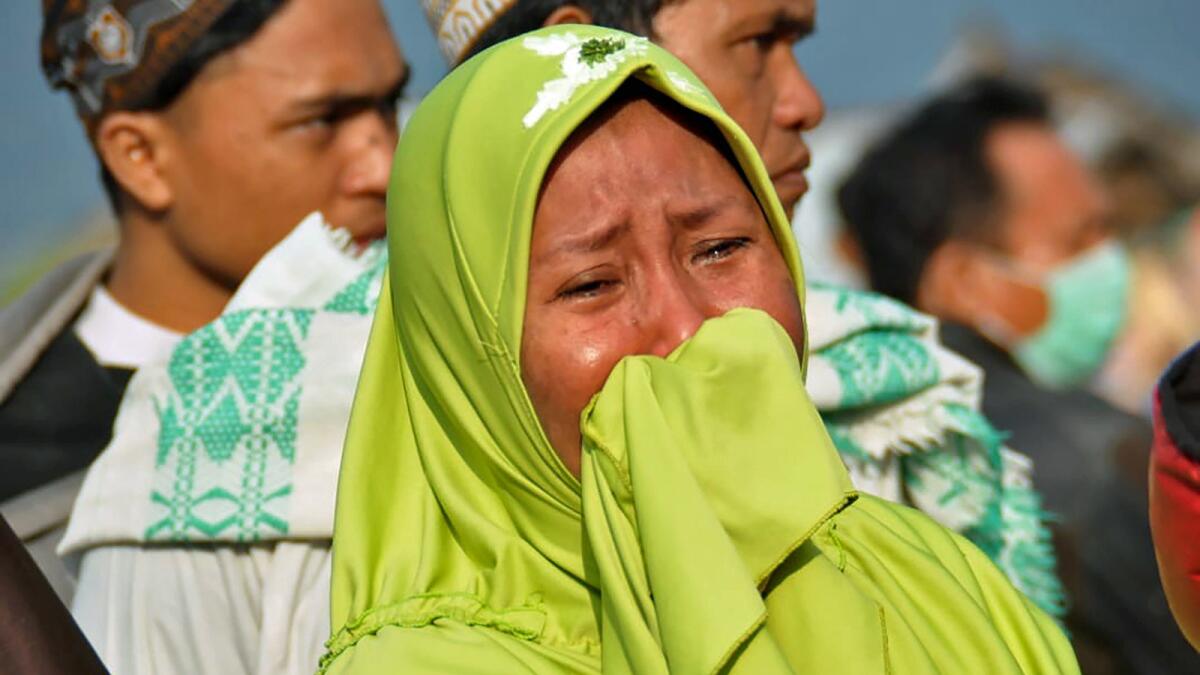
Indonesian President Joko Widodo called on citizens to pray for the affected region and said he had asked ministers and agencies to head to the region and assist with relief work.
The Indonesian Red Cross is deploying ambulances and water trucks to the region as well as distributing tarpaulins, blankets, sleeping mats and other supplies. But getting supplies to the region will prove challenging with the road from Poso, a major town in central Sulawesi that could serve as a supply link to Palu, damaged or blocked.
Palu is a three-hour flight across the Java Sea and Makassar Strait from Jakarta and is closer to the southern Philippines and eastern Malaysia than to Java, Indonesia’s most populous island.
By late afternoon Saturday, the Palu airport, which had temporarily accommodated only propeller planes because of damage sustained in the disaster, was reopened to relief flights.
The damage came after a series of earthquakes in August that killed at least 460 people on Lombok, a holiday island east of Bali, the main destination for tourists to Indonesia.
Indonesia, a 3,000-mile-long archipelago comprising 17,000 islands, is one of the most quake-prone regions in the world, lying in a zone known as the Ring of Fire with more than 100 active volcanoes.
The country has been hit with several deadly earthquakes since 2004, when a magnitude 9.1 earthquake off the coast of western Indonesia triggered a tsunami that killed more than 230,000 people in countries across the Indian Ocean region, most of them Indonesians.
Special correspondent Roughneen reported from Jakarta, Indonesia, and Times staff writer Bengali from Mumbai, India.
Shashank Bengali is South Asia correspondent for The Times.
Twitter @SBengali
UPDATES:
7:10 p.m.: This article was updated with the new death toll, at least 405.
9:05 a.m.: This article was updated throughout with staff reporting and new details.
1:05 a.m. Sept. 29: This article was updated with news of 384 dead.
This article was first published at 10:20 p.m. Sept. 28.
More to Read
Sign up for Essential California
The most important California stories and recommendations in your inbox every morning.
You may occasionally receive promotional content from the Los Angeles Times.
